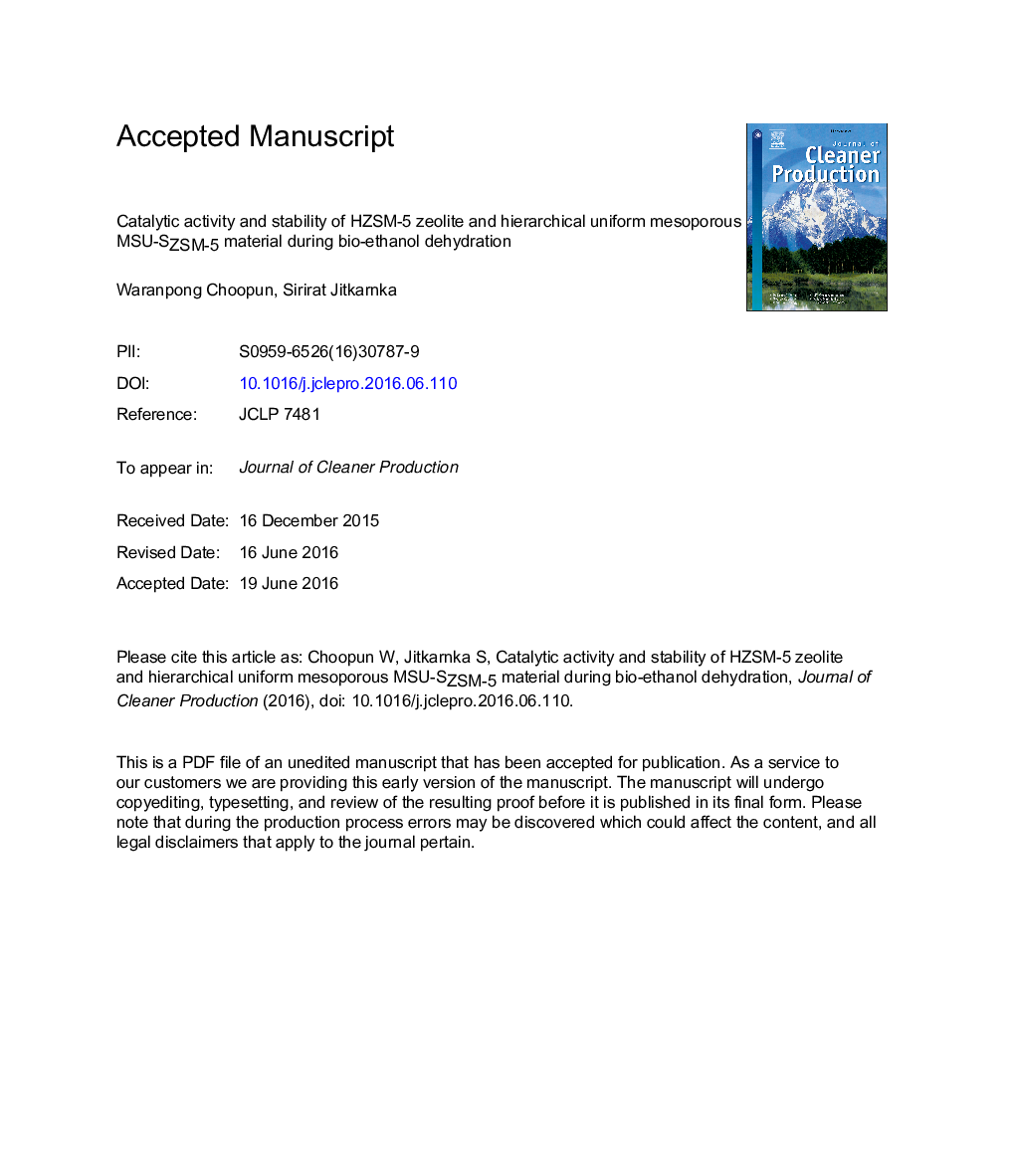| Article ID | Journal | Published Year | Pages | File Type |
|---|---|---|---|---|
| 8101164 | Journal of Cleaner Production | 2016 | 40 Pages |
Abstract
Due to high diffusivity, mesoporous catalysts and their composites are potential catalysts worth being tested for the dehydration of bio-ethanol. Hierarchical mesoporous MSU-SZSM-5 (Michigan State University) material has been successfully synthesized using HZSM-5 zeolite as a seed (denoted as SZSM-5). Subsequently, the HZSM-5 zeolite and its hierarchical mesoporous MSU-SZSM-5 material were studied for their catalytic activity and stability in bio-ethanol dehydration in this work. The reaction was conducted in a U-tube fixed bed reactor at 450 °C for 4 days. The results showed that propane selectivity decreased, and ethylene, propylene, and mixed C4 increased in the gas from using HZSM-5 catalyst whereas the gas product of MSU-SZSM-5 was mostly composed of ethylene. Moreover, HZSM-5 still maintained the production of large hydrocarbons such as C9 and C10+ aromatics along with 96 h of time-on-stream because its pore size was less proper for coke deposition. On the other hand, for MSU-SZSM-5, the selectivity of C10+ aromatic fraction decreased along with time-on-stream due to coke deposition. Furthermore, the spent catalysts were examined for their textural properties. HZSM-5 showed the better catalytic activity and textural properties than that of MSU-SZSM-5, indicating by a lower % decrease in surface area, lower amount of coke deposited, lower decrease in acidity, and no dealumination during 4 days of bio-ethanol dehydration. However, MSU-SZSM-5 produced a significantly-higher content of large hydrocarbons such as kerosene and gas oil.
Related Topics
Physical Sciences and Engineering
Energy
Renewable Energy, Sustainability and the Environment
Authors
Waranpong Choopun, Sirirat Jitkarnka,
